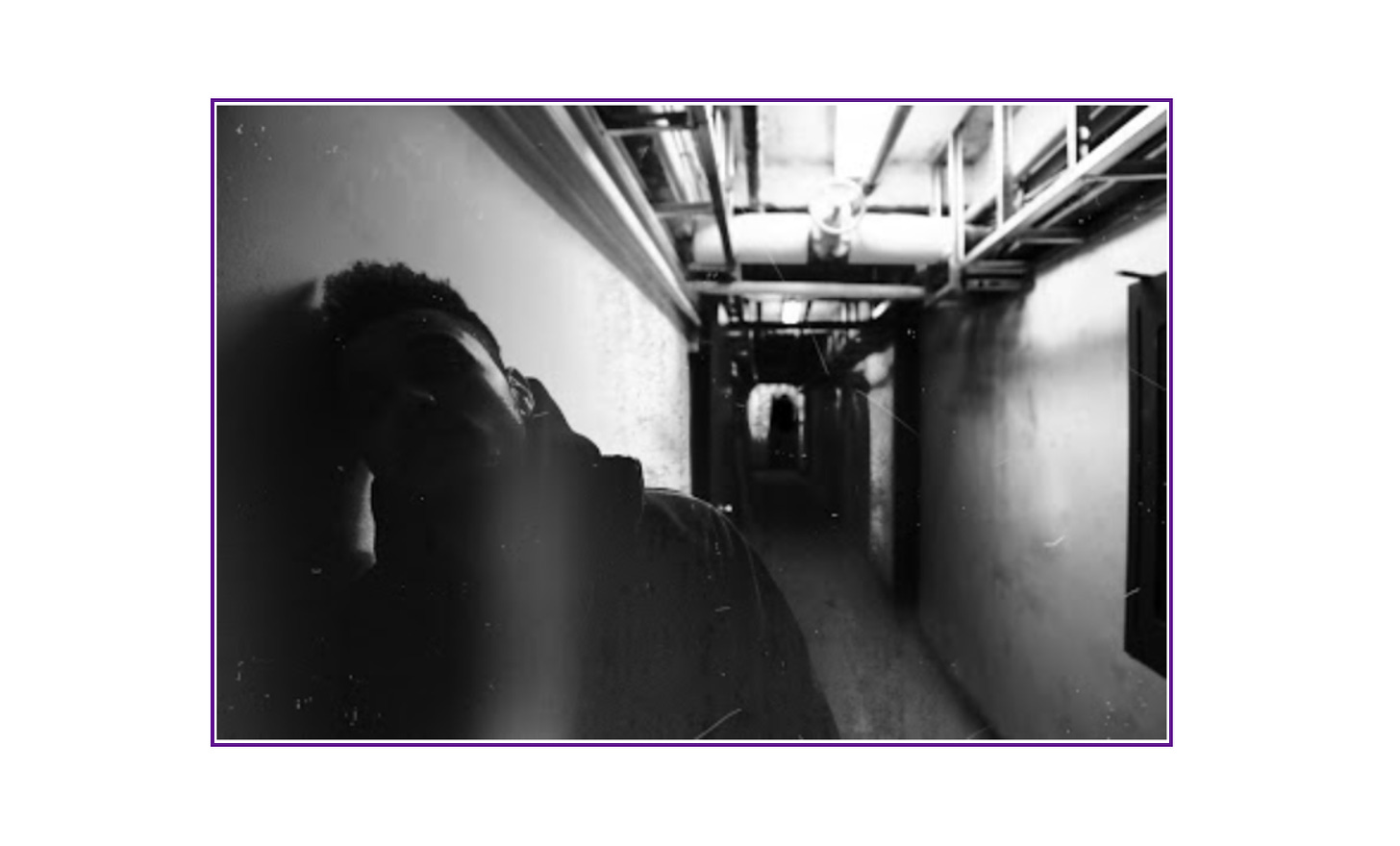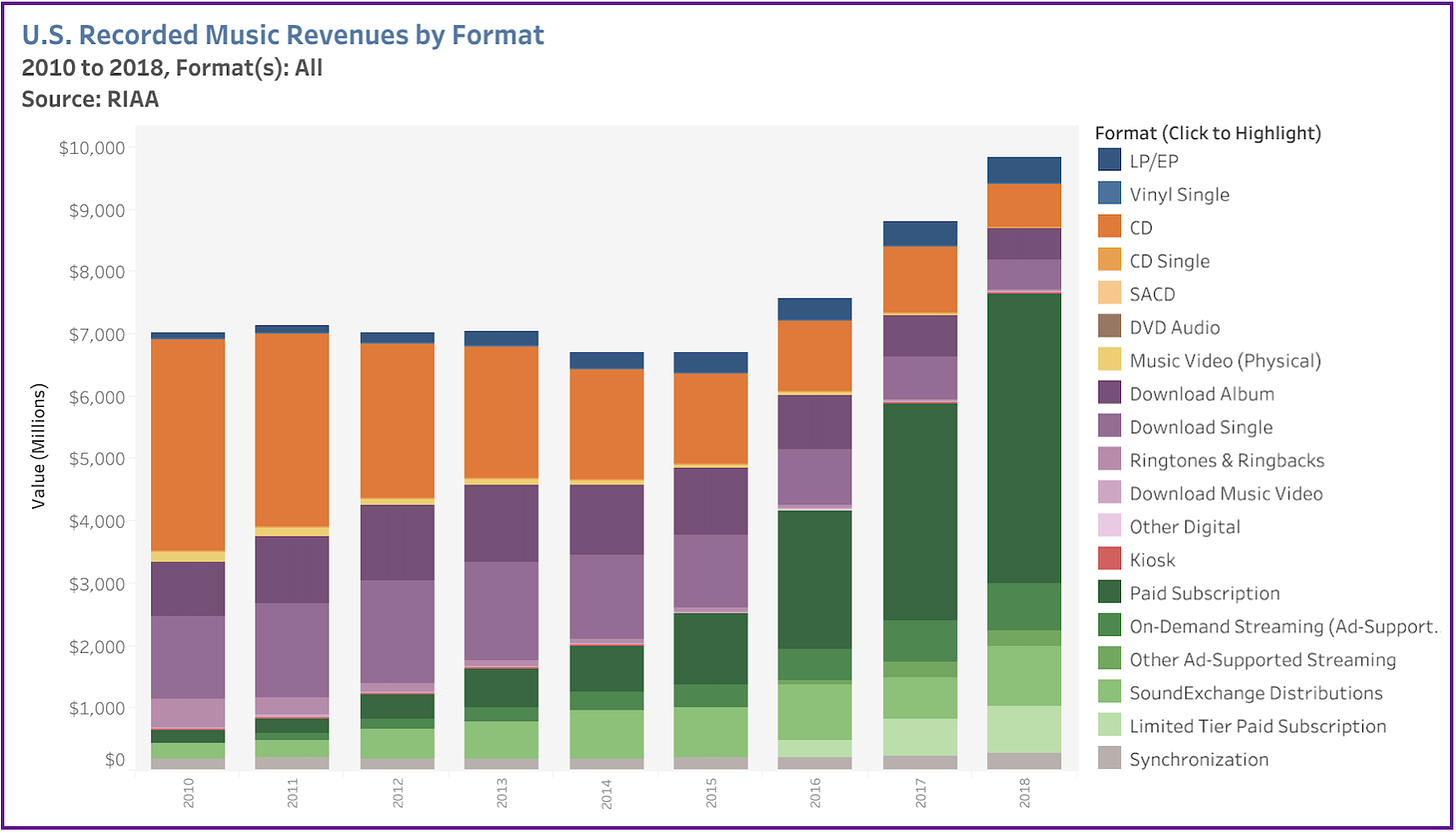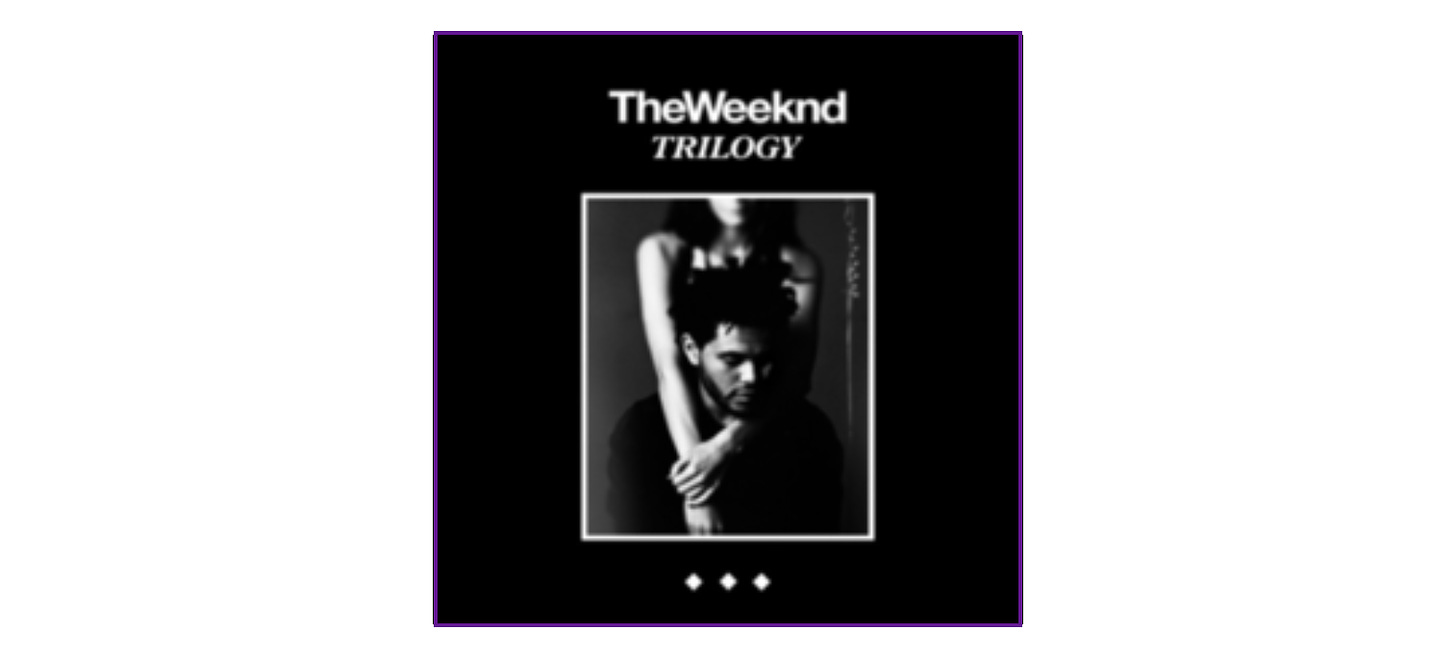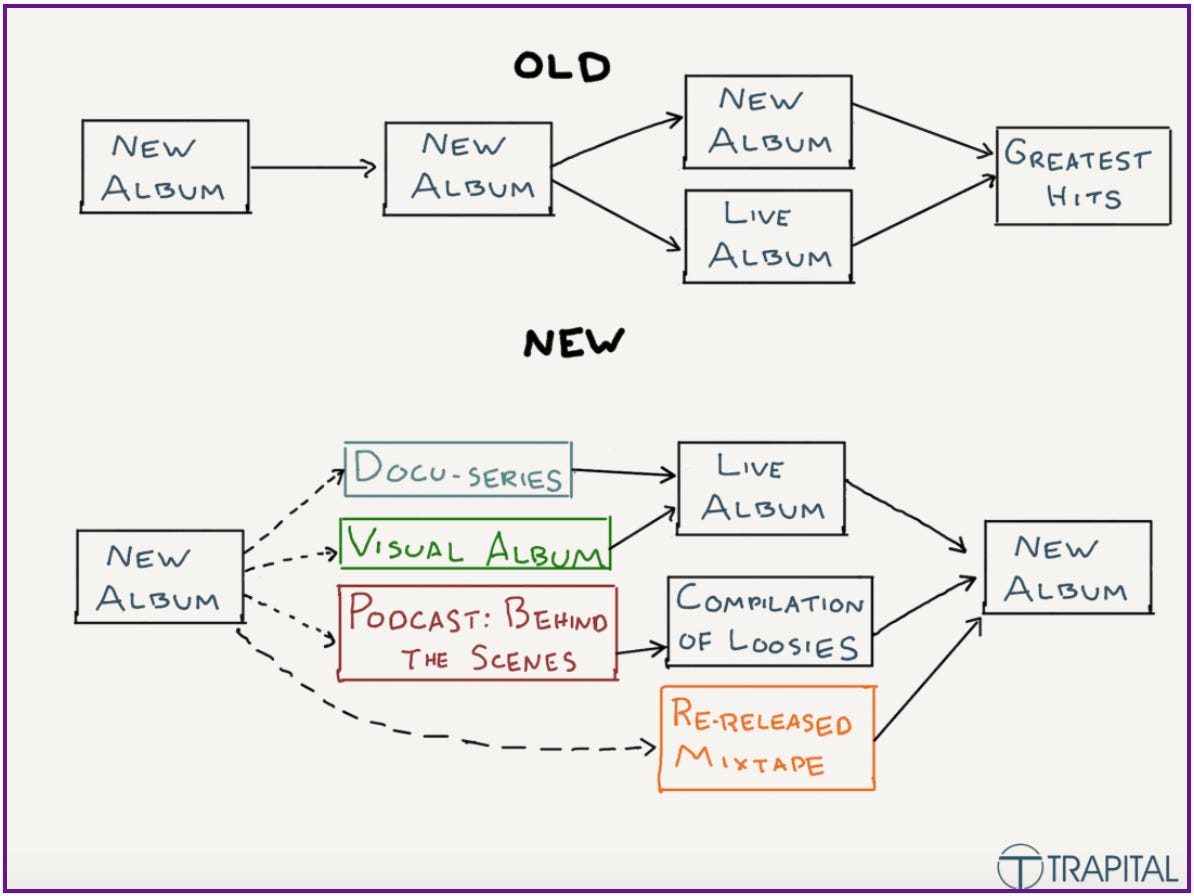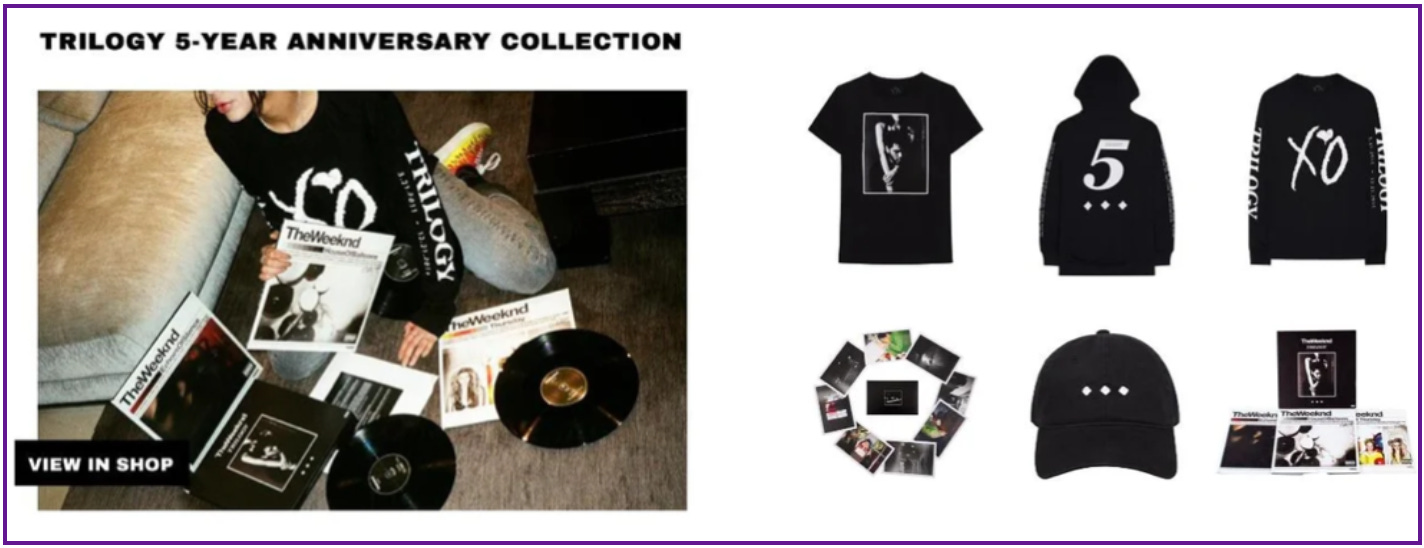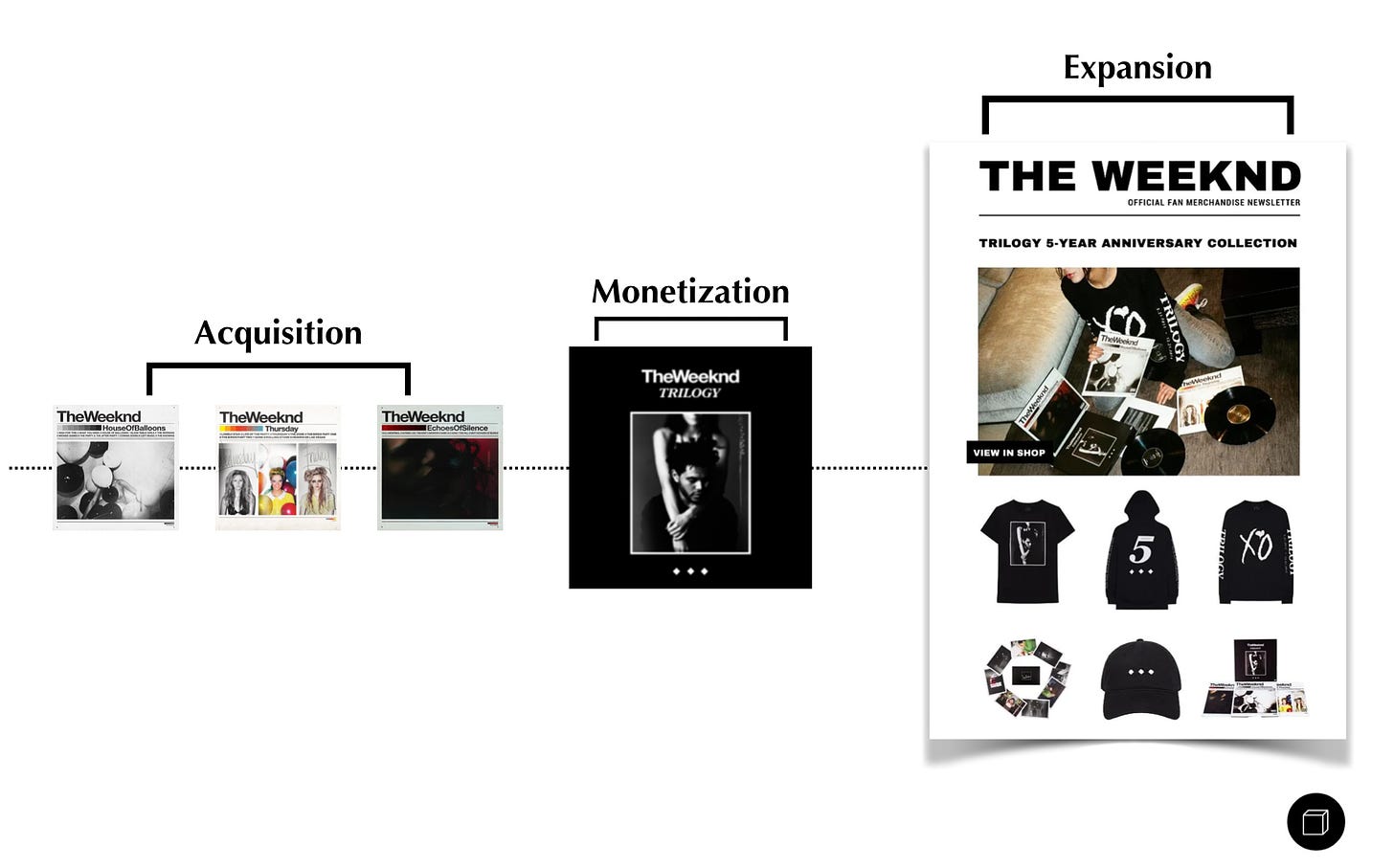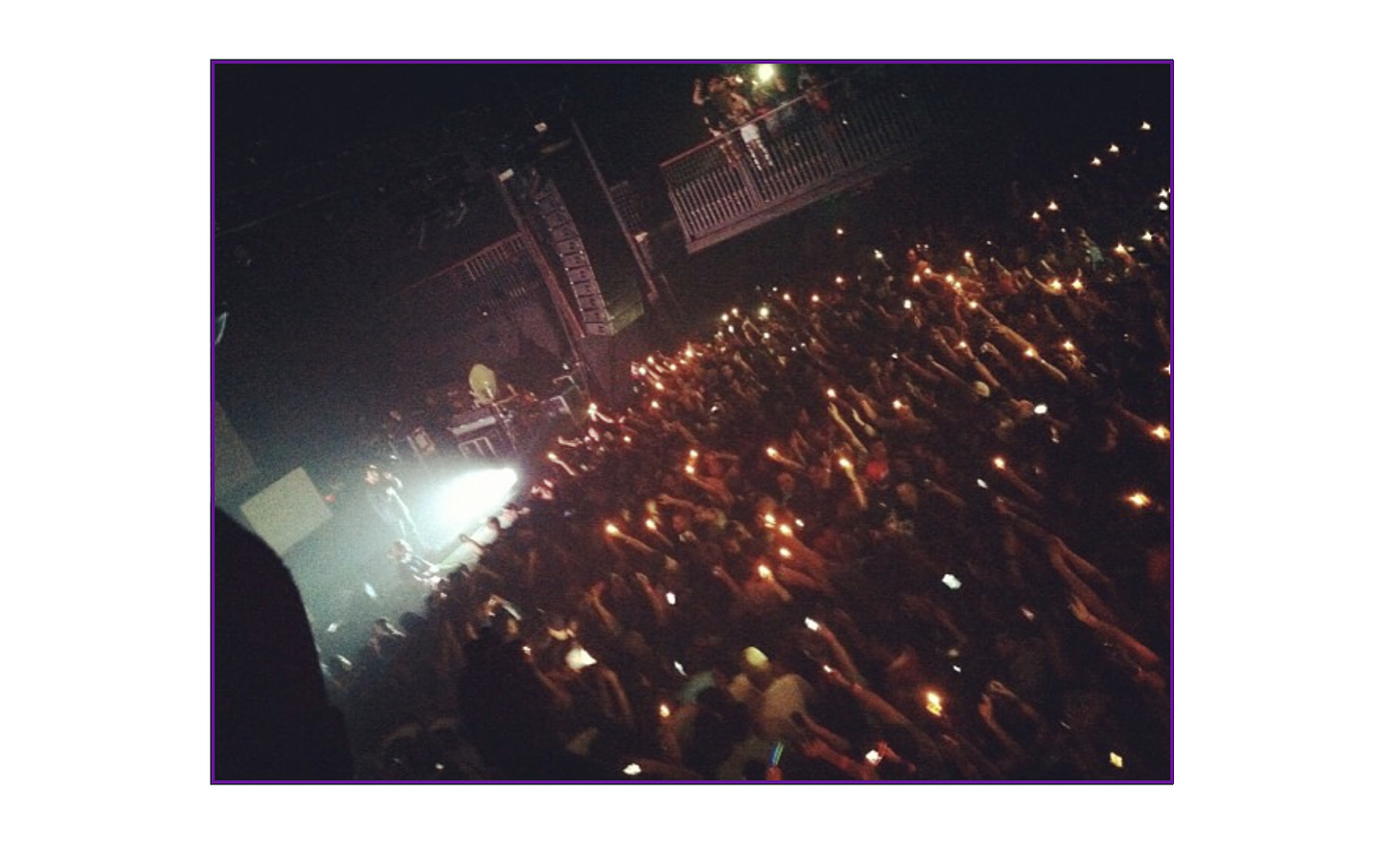How to Monetize a Music Catalog
How early packaging decisions helped pave the way to superstardom.
SaaS Pricing is hard. PricingSaaS is your cheat code.
Monitor competitors, track real-time benchmarks, discover new strategies, and more.
I’ll always remember the first time I heard The Weeknd.
I was living in a studio apartment in Dallas, working my first job out of college, and scouring hip-hop blogs for new music after work.
One night, I noticed a tweet from Drake with a YouTube link featuring a blurry figure in a warehouse hallway. I was intrigued. The link directed me to The Weeknd’s Wicked Games, which was unlike anything I had ever heard before. I was hooked.
In the current streaming environment, it’s easy to forget the music business landscape in 2011. Streaming only made up a fraction of the revenue puzzle, still overshadowed by CD sales and downloads.
It was in this environment that The Weeknd emerged like a speed-ball at a dinner party - a mysterious dynamo leading listeners through the ups and downs of a dark and twisted underworld filled with sex, drugs, and debauchery.
While his use of mystery and anonymity to build virality in the early days is equally fascinating, in this post I want to focus on the product lifecycle of The Weeknd’s first three mixtapes: House of Balloons, Thursday, and Echoes of Silence, also known as the Trilogy.
Through creative packaging strategies, he has leveraged the mixtapes to:
Build one of the most loyal fanbases in music
Position himself for the streaming era
Reward day-one fans for their loyalty
This email is brought to you by PricingSaaS.
SaaS pricing is hard, and there aren’t many places to turn for help. PricingSaaS is a cheat-code that lets you:
Track pricing trends across the SaaS landscape 📈
Benchmark pricing and packaging for your industry 🎯
Research 🔔
Building a Fanbase
The Drake co-sign came shortly after The Weeknd uploaded his first tracks to YouTube, but before he dropped a full project.
With hype building, rather than pursue a record deal, he released his first project, House of Balloons, as a free mixtape. His reasoning will sound familiar to tech startups looking to build an active userbase early on.
"I really wanted people who had no idea who I was to hear my project," he told Forbes. "You don't do that by asking for money."
In other words, The Weeknd used a freemium approach to get his product in the hands (or headspace) of as many listeners as possible.
Beyond understanding the importance of reach, he also understood shifting industry dynamics, specifically, the diminishing importance of album sales. Once an artists’ cash-cow, new music was becoming a means to an end.
"We live in a world where artists don't really make the money off the music like we did in the Golden Age," he said. "It's not really coming in until you hit the stage."
House of Balloons received critical acclaim and endless co-signs from other artists, making The Weeknd one of the most promising young stars in music. Predictably, he was swarmed by record labels. It would have been understandable to sign a deal and capitalize on the momentum. Instead, he remained independent and doubled down on the freemium approach, releasing his second mixtape, Thursday, five months later.
Stylistically, Thursday went all-in on the long, gothic R&B tracks that early super-fans fell in love with. While not as critically-acclaimed as House of Balloons, Thursday did something very important: it allowed his already passionate fanbase to dive deeper into his music and psyche, making them even more passionate. He also proved he wasn’t a fluke, delivering another high-quality project and doubling his catalog in five months.
At this point, you might think he would finally sign a record deal, settle into the studio, and take his time on a star-studded, label-backed debut album. Instead, he gave the world one more mixtape, releasing Echoes of Silence four months later - marking his third free project in nine months. By this point, his fanbase had grown so big and rabid for his music that the rush to download Echoes crashed the server.
Needless to say, his audience acquisition strategy worked. After delaying monetization through all of 2011 as he recorded and released free music, in April 2012 he set off on a state-wide tour on the strength of mixtapes. The demand was so strong, that he doubled the dates a couple of months in, adding stops in Europe as well - further illustrating the benefits of making his music accessible to the entire world for free.
Repackaging for the Streaming Era
Upon returning, The Weeknd finally signed with Republic Records. In his first move, he repackaged the mixtapes into a 3-disk collection, aptly titled Trilogy.
Understanding that the music was already available for free online and that his fans had been listening to it for over a year, he added value, mixing and mastering the tapes for the first time, and adding three new bonus tracks. Now boasting thirty songs, he kept the price comparable to a typical album, boosting the relative value. The approach worked. Six months later, Trilogy went Platinum.
Trilogy’s re-packaging is particularly unique because he did it years before the practice became popular in hip-hop. Mixtape reissues, though getting more common, are a recent development. Since most mixtapes have uncleared samples, they’re not allowed on the streaming platforms due to copyright infringement. Since clearing samples can get expensive, label executives have traditionally been reluctant to spend the money.
That’s changing as artists seek new ways to monetize their existing catalog and serve day-one fans. Dan Runcie has covered the varying ways modern artists are getting mileage out of their music in his must-read newsletter, Trapital, capturing the evolution from the old days in the visual below.
Part of why artists re-release mixtapes today is to sustain momentum between albums, but when The Weeknd re-packaged Trilogy, the mixtapes comprised his entire catalog. This allowed him to position the collection as the culmination of everything that came before it, an achievement his fans were part of for supporting him in the early days.
More importantly, he laid the foundation for streaming success. Since he didn’t release another solo project until the following fall, without Trilogy, he would have been invisible on Spotify, Apple Music, and other streaming platforms until September 2013 when he released his first studio album, Kissland.
Getting onto these platforms earlier allowed him to sell digital versions of Trilogy, and pull-in streaming revenue while he was busy working on his next project. It also opened him up to new listeners who wouldn’t have known where to find his mixtapes, growing his audience as he prepared for his next tour.
This was absolutely critical since touring is the most lucrative revenue stream for most artists. Case in point, after amassing 5.5 billion streams between 2015-2017, The Weeknd was able to secure a $75 million touring advance. While many of those streams came from more recent pop hits like “Can’t Feel My Face” and “Earned It”, Trilogy has been a critical long-tail ingredient to his success. Including streaming numbers, the collection has since reached 3x multi-platinum certification.
A Trip Down Memory Lane
By November 2017, The Weeknd had firmly rooted himself as one of the biggest stars in music. Beyond the stage, he dated Selena Gomez, experiencing a completely different level of fame and spotlight.
I bring this up because it seems like the perfect time for an artist to lose sight of their roots and risk alienating day-one fans. Fortunately, he didn’t let that happen.
On the 5-year anniversary of the release, The Weeknd announced a limited-edition collection of 1,000 box-sets, each including Trilogy and all three individual mixtapes on vinyl, a special-edition photo set from the mixtape era, and exclusive apparel commemorating the project. The entire collection sold out in hours, leaving fans begging for a restock on Twitter.
With only a thousand units available, the anniversary release is on the opposite side of the spectrum from his mixtape strategy. While releasing the mixtapes for free drove listener acquisition through accessibility, the anniversary collection limited access to a select few, using exclusivity to heighten demand and reward his most attentive fans. The anniversary collection reminded me of Kevin Kelly’s 1,000 True Fans concept, which states:
A true fan is defined as a fan that will buy anything you produce. These diehard fans will drive 200 miles to see you sing; they will buy the hardback and paperback and audible versions of your book; they will purchase your next figurine sight unseen; they will pay for the “best-of” DVD version of your free youtube channel; they will come to your chef’s table once a month. If you have roughly a thousand true fans like this (also known as super fans), you can make a living — if you are content to make a living but not a fortune.
While The Weeknd surely has many multiples of a thousand true fans (and the Forbes-list validation to prove it), his release matched the exact number of box-sets to Kelly’s rule. By limiting availability, he chose to leave money on the table in favor of rewarding his day-ones and renewing interest in his mixtapes. The prospect of a restock or another surprise-release likely caused many fans to track his social feeds even more obsessively, and the scarcity created an aftermarket for the set, which is still active today.
The Trilogy Product Legacy
Throughout the Trilogy product lifecycle, The Weeknd has shown the importance of using the right strategy at the right time, depending on the goal. In this case, he utilized a freemium approach to build an audience as an unknown entity in the early days. From there, he used thoughtful differentiation to re-release his mixtapes, both monetizing the material and building a foundation for streaming success. Lastly, in the midst of superstardom, he showed his day-ones that he hadn’t forgotten about them, capturing their nostalgia with a surprise-bundle that drove virality and renewed interest in the mixtape era.
The beauty of the Trilogy playbook is that each iteration is anchored to the exact same source material. Sure, he spun up customized merch and photos (probably printed from the early days of his Instagram), but other than the three bonus tracks on Trilogy, the music is recycled. For what it’s worth, I wouldn’t be surprised if he adds to the Trilogy product legacy, commemorating the 10-year anniversary in some way in November 2022.
In case you’re wondering, I did not get my hands on the 5-year anniversary set. I did, however, download all three mixtapes and made it a point to buy Trilogy when it came out. I can also vouch for the energy of his first tour, catching him in Austin in October 2012 (pictured below). It was one of those shows where the entire crowd knew every word, and nobody took their seat the entire time - even through multiple encores. Pretty amazing for an artist who had yet to sell a single record.
Enjoying Good Better Best?
If you enjoyed this post, I’d love it if you hit the “like” button, that way I’ll know which posts are resonating the most!
If you have thoughts or feedback, I’d love to hear it!
Lastly, if you’re enjoying Good Better Best and have friends or colleagues who would enjoy a weekly packaging case study, I’d be thrilled if you shared this with them!




